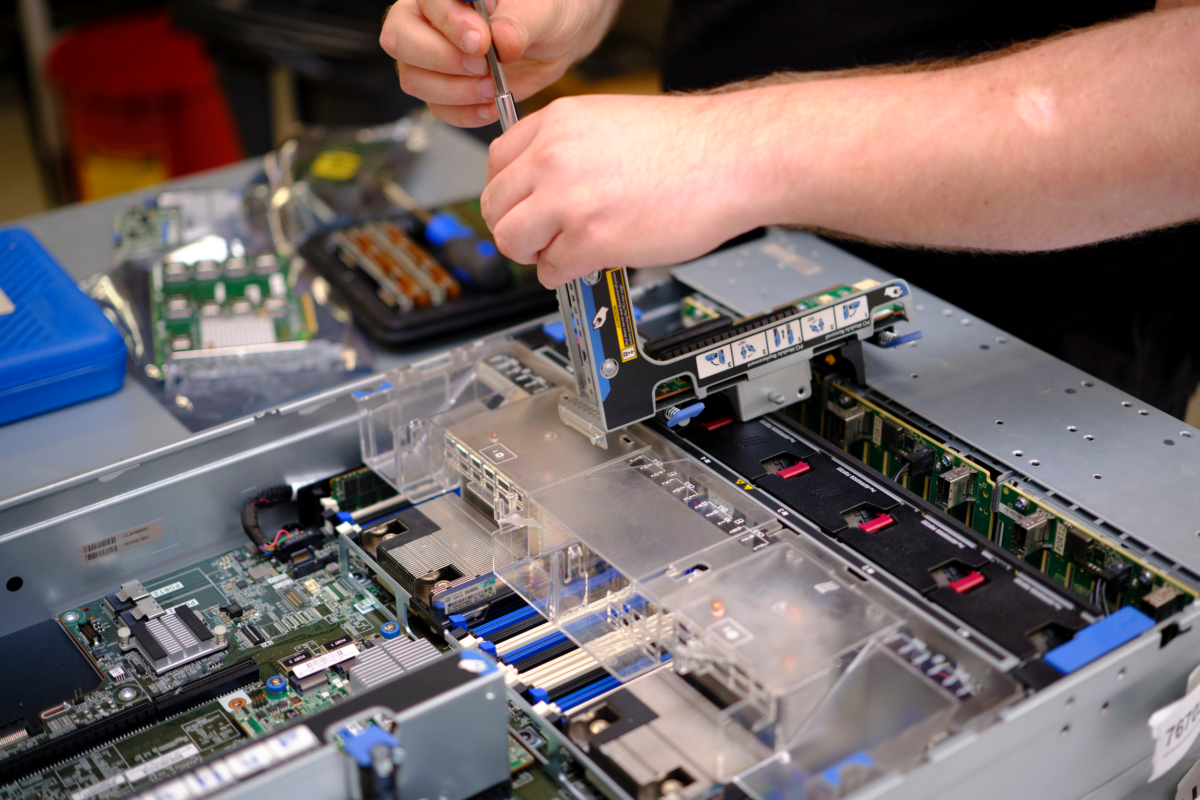
How circular economy principles are revolutionizing innovation in IT
The IT industry, a cornerstone of modern innovation, is also a significant contributor to global waste, particularly electronic waste (e-waste). This challenge has led to the growing adoption of circular economy principles in IT, a model that emphasizes reusability, recycling, and the sustainable use of resources. By integrating these principles, companies not only reduce their environmental footprint but also drive innovation, creating more resilient and efficient systems.
Understanding circular economy in IT
The circular economy is a regenerative system in which resource input, waste, emissions, and energy leakage are minimized by slowing, closing, and narrowing material and energy loops. This is achieved through long-lasting design, maintenance, repair, reuse, remanufacturing, refurbishing, and recycling.
In the context of IT, a circular economy moves away from the traditional “take, make, dispose” linear model and embraces sustainability at every stage of a product’s lifecycle. From the design phase to end-of-life management, circular economy principles are transforming how IT products are developed, used, and disposed of.
Driving innovation through sustainable design
One of the most significant ways the circular economy drives innovation in IT is through sustainable design. IT companies are increasingly designing products with longevity and recyclability in mind. For example, modular designs allow for easy repairs and upgrades, extending the lifespan of devices and reducing the need for new resources.
This shift encourages innovation as companies strive to create products that are not only high-performing but also sustainable. For instance, some companies are developing hardware that can be easily disassembled, repaired, or upgraded, reducing the environmental impact and enhancing user experience. This approach not only benefits the environment but also provides a competitive edge, as consumers increasingly favor sustainable products.
E-Waste management and resource recovery
E-waste is one of the fastest-growing waste streams globally, with millions of tons of electronic devices discarded each year. Circular economy principles encourage the recovery and reuse of valuable materials from these devices, reducing the demand for raw materials and lowering environmental impact.
Innovative IT solutions are emerging to address e-waste, including advanced recycling techniques that recover precious metals and other valuable components from discarded electronics. These recovered materials can be reused in the production of new devices, creating a closed-loop system that reduces waste and conserves resources.
Additionally, companies are developing software and hardware solutions that track the lifecycle of IT assets, enabling better management and disposal of e-waste. This not only helps in reducing environmental harm but also opens new business opportunities in the recycling and refurbishing sectors.
The role of digital platforms in circular IT
Digital platforms play a crucial role in facilitating the circular economy in IT. These platforms connect consumers, businesses, and recyclers, creating networks that support the reuse, refurbishment, and recycling of IT products.
For example, some platforms allow users to trade in old devices for refurbished ones, ensuring that products are reused rather than discarded. Others offer services that manage IT assets throughout their lifecycle, from procurement to disposal, ensuring that products are used efficiently and sustainably.
These digital solutions are driving innovation by creating new business models based on circular principles. Companies that leverage these platforms can offer more sustainable and cost-effective IT solutions, enhancing their market position while contributing to environmental sustainability.
Case study: circular economy in action
One notable example of circular economy principles driving innovation in IT is the approach taken by companies like Dell Technologies. Dell has implemented a closed-loop recycling program, where materials from old electronics are recovered and reused in the production of new products. This program not only reduces waste but also lowers production costs and supports sustainable innovation.
Dell’s initiative is just one of many examples of how the IT industry is embracing circular economy principles to create more sustainable and innovative products. By focusing on resource efficiency and waste reduction, companies can drive significant innovation while meeting the growing demand for eco-friendly solutions.
The integration of circular economy principles
The circular economy in the IT industry is more than just a trend; it’s a necessary evolution towards sustainability. By embracing these principles, companies can reduce waste, conserve resources, and drive innovation in product design, e-waste management, and digital platforms.
As the IT industry continues to grow, the adoption of circular economy principles will be crucial in shaping a more sustainable and innovative future. Companies that lead the way in this transformation will not only benefit the environment but also gain a competitive edge in a market that increasingly values sustainability.